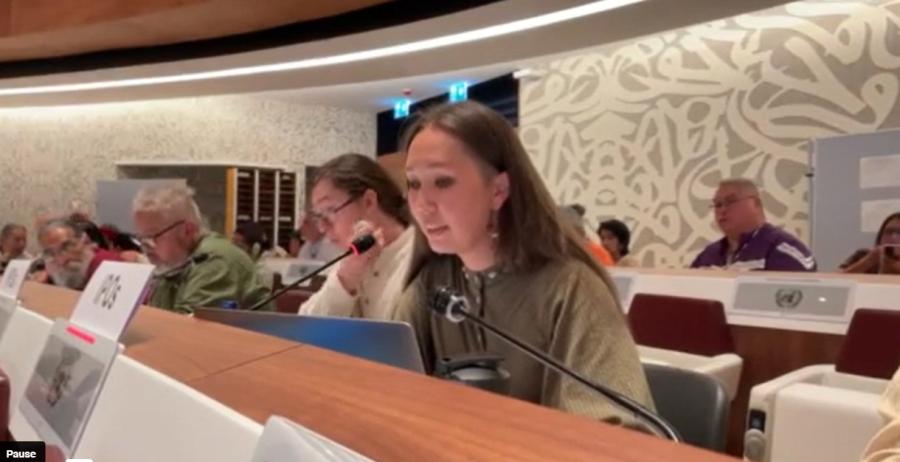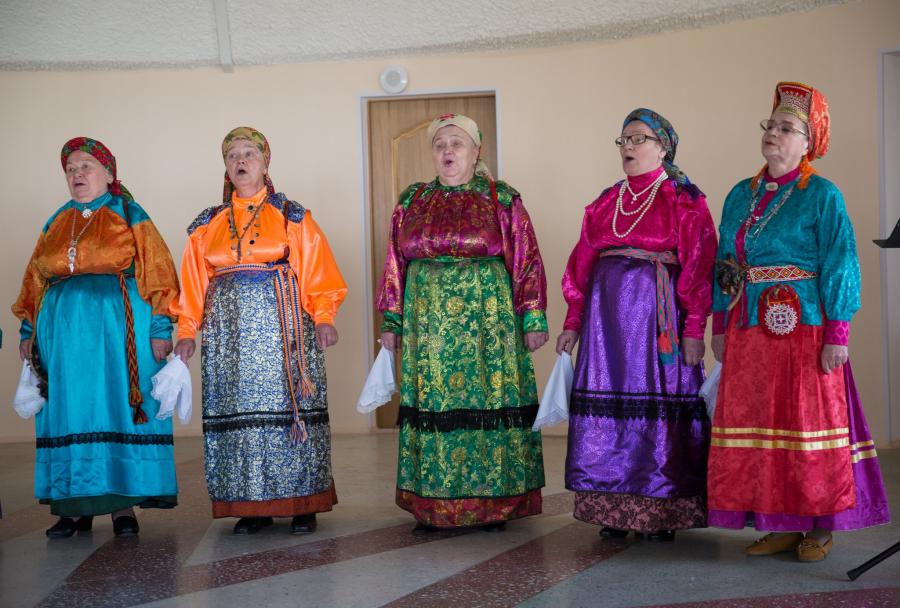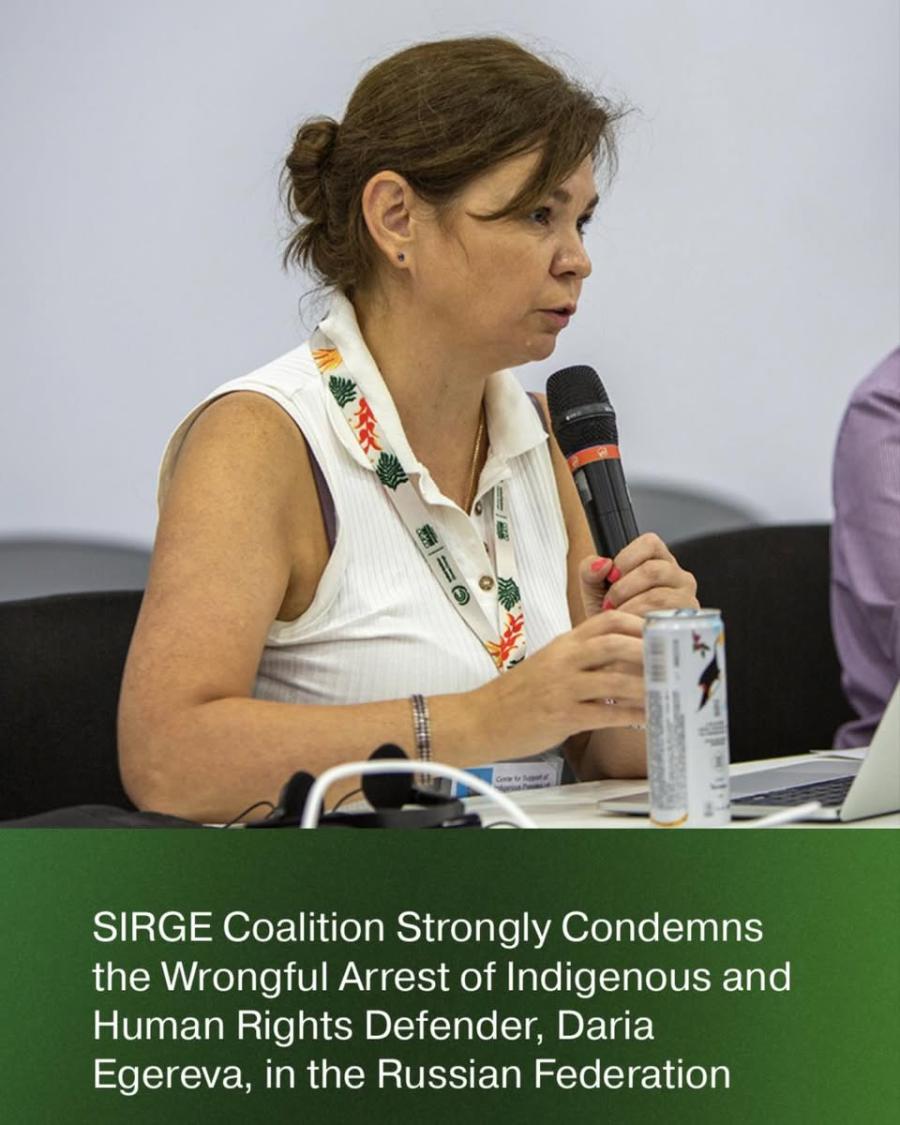With the collapse of the Soviet Union and the opening of Russian society to the scrutiny of the West, the problems faced by the Indigenous Peoples of the Russian North have finally begun to receive international attention. Many of these issues are similar to those faced by Indigenous Peoples elsewhere: land tenure, self- determination, cultural survival. The deteriorating state of the health of the Russian North's Indigenous Peoples and their lack of access to adequate health care have yet to receive sufficient attention. The public health care system in this region has suffered greatly, both from cutbacks in the midst of recurring economic crises, as well as from the lack of preparation for the conditions of the North among medical personnel. Nowhere has this been more true than in the far eastern region of Chukotka.
Chukotka lies directly west of Alaska. These northern twins are divided both by the narrow Bering Strait and by the enormous gulf between their different state systems. The name Chukotka is taken from the word `Chukchi' -- the name the Russians long ago gave one of the native peoples of the peninsula. The Chukchi's self-designation is l'ygoravetlan, which means "the real people." As a result of Soviet-era immigration by Russians, Ukrainians, and other Soviet peoples, Chukchis and other Indigenous Peoples of Chukotka (Evens, Koryaks, Yupiks, Chuvans, and Yukagirs) make up less than 20 percent of the region's population. Today some Chukchi live in cities, working primarily as teachers, journalists, artisans, administration functionaries, wage laborers, and in museums and cultural centers. Most, however, live (as they did in the past) in small villages or in the tundra, tending herds of domestic reindeer, catching fish, and hunting. The Chukchi and roughly 30 other Indigenous Peoples of the North, Siberia and the Far East of Russia continue to engage in these traditional subsistence activities. The approximate population of the Peoples of the North across Russia today is just under 200,000; the Chukchi themselves number about 15,000.
With no formal agreement of any kind, Tsarist Russia summarily annexed the Aboriginals of the North, along with vast tracts of land, to the Russian state. This annexation did not come to pass without bloodshed, but the majority of historians have characterized it as a mostly peaceful subjugation. Much has changed since those times, especially with the arrival of Soviet power. In the first brief stage of sovietization, the changes were generally reasonable and effective, but before long, state measures became totalitarian and radical. Even good intentions were carried to such a level of absurdity that, figuratively speaking, medicine was turned into poison and knowledge to senselessness. Land, reindeer, and all other means of production were appropriated by the government. The nomadic way of life was deliberately destroyed.
Most importantly, the Chukchi were subjected to an unprecedented experiment: they were made to switch from a "primitive-communal" society to a socialist society. In the process, people were deprived of their rights to elementary self- government and self-realization. Families were destroyed as children were forcibly isolated from their parents and placed in boarding schools (internaty) in order to tame their "wildness" and to instill literacy and socialist values.
Evidently, Soviet authorities believed that the example of "primitive" peoples galloping ahead by centuries (from the perspective of socialist ideology) could persuade the world of the advantages of the socialist system. The limitations of this article do not allow for a full analysis of these radical changes, but I am convinced that it is precisely these changes, their character and their "place of application" that destroyed the roots of traditional culture and caused the deep maladaptation of the northern ethnic groups of Russia.
Russia has changed in recent years and the Peoples of the North no longer serve as proof of socialism's advantages. According to the new ideology, the Peoples of the North are expected to shift over to "self-sufficiency" and become "partners" rather than "dependents." The new slogan "From Paternalism to Partnership" reflects an ideology based on the example of the West, but is blasphemously hypocritical as applied to Russia. Indeed, it must be remembered that the Peoples of the North have always been involved in Russian society, even contributing to the industrial development (or, as it turned out, destruction) of their own land, receiving nothing in return. Only now, their economy and ecology ruined, is an "equal partnership" offered them.
Such a transition for the Aboriginals of the North is impossible for several reasons. First, the state has not established the necessary legislative foundations to support a partner relationship and independent economic (or other) activities on the part of Aboriginals. Legislative acts passed in Russia on behalf of the Peoples of the North are declarative in character and are not sufficiently sensitive to international human rights norms. They are also without mechanism for implementation. State programs, including those developed under the auspices of the International Decade of the World's Indigenous Peoples, are merely showpieces and lack the necessary financing for fulfillment. As a result of the recent redistribution of authority between federal and regional levels, the central government has lost its ability to influence the policies of regional powers. Second, fundamental values and institutions have been destroyed, and the mainsprings of life, including the biological, have been broken. People have simply lost the will, the ability, and the strength to live.
This combination of factors has created ideal conditions both for numerous falsifications and for the headlong destruction of aboriginal economy, culture, and health (both physical and psychological). The latter is probably the most important issue facing the Peoples of the North today. Unfortunately, Russia has yet to attach appropriate significance to the indicators testifying to the poor physical and psychological health of Northern Aboriginals.
Morbidity (the relative incidence of disease) among Northern Aboriginals is 2.5 to 10 times higher and lifespan 10 years less than among non-indigenous populations of the North. Over the last 15 years, the average age at death for Aboriginals in my home district of Bilibino (in western Chukotka) has been about 37 years. Research on the aboriginal population of the North shows the presence of unique features in the development and duration of various diseases. Infectious diseases with a tendency to become chronic account for 80 percent of reported illnesses. Tuberculosis, whose epidemic occurrence had been declining since the 1960s, has reemerged. In 1993, the incidence of tuberculosis in Chukotka among Aboriginals was on average 17.5 times higher than that among the non-indigenous population. The incidence of many other infectious and parasitic diseases is also typically higher among Aboriginals than non-Aboriginals.
Illness caused by alcoholism is 12 to 20 times higher than the Russian average. Official statistics show that the incidence of death from chronic alcoholism has risen 6.5 times among the male population of Chukotka and 19 times among the female population in the last year alone. The spread of alcoholism is connected to a marked increase in the suicide rate. In Chukotka, the suicide rate was 144.5 per 100,000 in 1995, and 165.7 per 100,000 in 1998.
Infant mortality is also a serious problem in aboriginal communities. According to federal statistics, the infant mortality rate among the Peoples of the North for the period 1995-97 was on average 37.2 per 1000 live births. The infant mortality rate for Chukotkan Aboriginals for the period 1991-1995 (according to the official statistics presented by the administration of Chukotka) was on average 48 per 1000 live births. At the same time, it is universally recognized that between the 1960s and 1980s the child mortality rate among the Peoples of the North dropped from 110-115 per 1000 to 35-40 per 1000, a factor of three. The situation is now catastrophically worse -- the general crisis in Russian society has led to the loss of the medical-demographic "achievements" of previous decades.
A poorly organized health care system, substandard living conditions, and the worsening ecological situation (among other factors) have contributed to high morbidity and mortality rates. The combination of these problems with specific anthropo-biological peculiarities inherent to the Aboriginals of the North is signifcant. Many researchers believe that Indigenous Peoples of the circumpolar Arctic share common morphological and physiological characteristics, formed under the influence of the geoclimactic conditions of the Far North. These characteristics are intransient for the Aboriginals of the North (in comparison with the acclimatization reactions that are observed among the immigrating population).
Lack of knowledge about these unique characteristics has had an especially pernicious effect upon the children of the Indigenous Peoples of the North. The recommendations for organizing nutrition programs in children's institutions in northern villages did not and still do not consider the fact that most Aboriginals cannot process milk sugar and therefore cannot digest whole milk. A milk- based diet is obligatory and even forced. Serious nutritional problems are also caused by the recurring change in children's diets. When children are in the tundra, they have a traditional diet, whereas in the boarding schools they eat "European" foods. This alternation leads to both psychological and physiological stress, and causes a reorientation in the secretory activity of the digestive and endocrine systems which in turn leads to a harsh failure in the work of the stomach, intestines, liver and pancreas.
In the midst of the current economic crisis and radical reforms, healthcare agencies are powerless to oppose these mounting health and welfare problems. But economic crises and reform are not the sole culprits for the problems faced by Northern Aboriginals. The Russian public health care system is itself poorly adapted to the regional and ethnic situation in the regions of the North, and that is the main reason for its powerlessness.
The years of "socialist enlightenment" hid a plethora of insufficiencies, perpetuated for both practical and personal reasons. The practical reasons included geography, lack of roads, insufficient financing, etc. Personal reasons included psychological barriers and stereotypical thinking. Dogmatism proved to be the largest obstacle. The network of medical institutions created in the North was patterned after the country's central regions without taking regional and ethnic peculiarities into account. Medical institutions were concentrated in cities and large villages, cutting off from preventative medical care the tundra and taiga populations and smaller communities. The need for mobile medical groups was not recognized. Emphasis was placed on positive indicators, such as large numbers of available beds, nurses and so forth, but these were of little help in dealing with the high incidence of illnesses.
To this day, the thinking and work practices of personnel in public health care agencies remains inflexible. The modus vivendi is not quality decision-making, nor step-by-step programs, but rather the execution of bureaucratic instructions. Treating patients as partners is not an accepted practice among medics. Healthcare as a whole neglects the cultural and spiritual distinctiveness of the Aboriginals of the North. There exists a high turnover rate among personnel, including the lead staff, who are predominately non-indigenous; nearly all of them live only temporarily in the North and many are unable to adapt to the peculiarities of the region. They do not understand the problems facing the aboriginal population, largely because there is no special training to prepare these specialists for the unique conditions of the North, and they are given no criteria for effective self-evaluation.
I have attempted to address these insufficiencies both in my practice as a doctor and by developing a theoretical basis upon which to argue for the necessity of conceptual change in the organization of public health care. These efforts have resulted in a few minor achievements: a small health center was established in Chukotka's Bilibinskii district and the combined medical service was slightly expanded in the most isolated nomadic camps and villages. On the theoretical level, similarly, radical results have yet to be achieved. I have appealed to the State Duma of the Russian Federation to add several points to the draft law "On health care in the Russian Federation" -- points that would highlight the special problems of organizing health protection for the people who engage in traditional lifestyles. The proposal was rejected.
The more radical approach to preserving the health of the Peoples of the North would be the creation of an independent health care service with its own specific goals and programs, an autonomous local administration, an independent statistical and analytical service, and independent financing. Such a serious reorganization is possible only by decision of the federal government. To count on such a decision is, at this time, unrealistic. Given the lack of financial means, the best approach is to establish a preliminary model of such a service -- a health center -- under the auspices of the Russian Association of Indigenous Peoples of the North (RAIPON). Unfortunately, such a health center is still just a dream -- adequate funding for it simply doesn't exist. Nevertheless, in Moscow, a health center is currently in the initial planning stage. This small collective center, staffed by two or three medical professionals, will seek to establish permanent communication with activists from various regions with the goal of receiving reliable information about Aboriginals' medical condition and about their medical needs. Contacts would also be established with the Ministry of Health, the Academy of Medical Sciences, the State Committee of the North (GOSKOMSEVER), and other interested foundations and organizations. Workers at the center would analyze information from the regions in order to formulate a database, and in collaboration with scholars would undertake several tasks: working out a plan for service; devising strategies and tactics for action; preparing, publishing and distributing a medical handbook for reindeer herders, fishermen, and hunters (the handbook would report on ethnic particularities and regional pathology, describe ways of administering self-help and mutual help under field conditions, and discuss elements of folk medicine); putting together a method for preparing medical assistants selected from among Aboriginals who carry out traditional activities; and working on the distribution of medical and humanitarian aid. A guest house (with five to ten cots) could accommodate patients sent to Moscow hospitals, clinics, and research institutes for observation, treatment and consultation.
In each region in the North, the activities of social activists need organization. If sufficient means are made available, regional health centers based on the example I established in Bilibino District, Chukotka should be established. Regional health centers would extend social and psychological help to Aboriginals, conduct medical consultation for the population via radio, prepare medical assistants, facilitate the population's sociopsychological adaptation to conditions of rapid social change, and, if possible, improve migrant work.
If the pilot phase is successful, the network of regional health centers could be expanded. In the long term, this network of health service for the Aboriginals of the North could either remain in the realm of civil society (i.e., funded by private foundations) or be handed over to the Ministry of Health or the Committee on the Affairs of the Peoples of the North.
Article copyright Cultural Survival, Inc.



